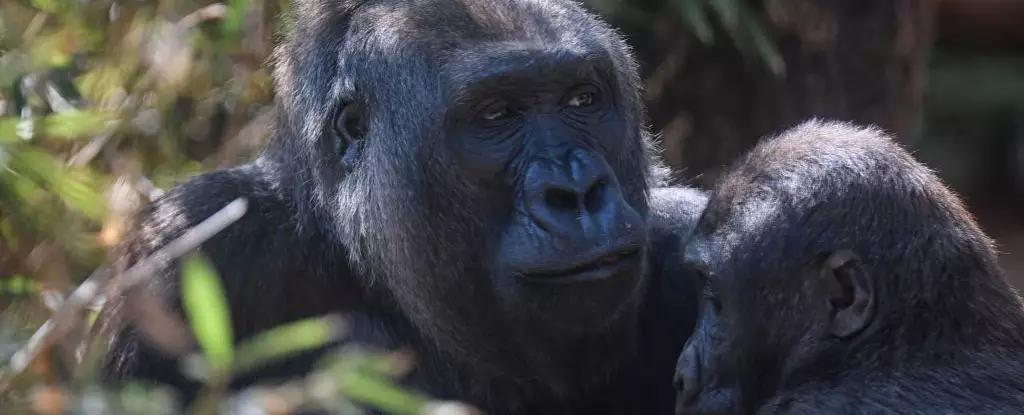The COVID-19 pandemic, which has caused unprecedented disruptions worldwide, serves as a persistent reminder that the virus SARS-CoV-2 is still a tangible threat—this time not just to human populations, but to wildlife as well. Recent research conducted at the Belo Horizonte Zoo in Brazil has revealed that nine animals out of a sample of 47 tested positive for the virus. This alarming revelation raises vital questions regarding the ecological consequences of the virus as it demonstrates its capacity to cross species boundaries in a setting steeped in human-animal interaction. The study, led by a team of scientists from the Federal University of Minas Gerais, underscores the unique epidemiological environment that zoos create, effectively becoming a melting pot for diverse species under continuous human care.
Testing was performed on animals during a window between November 2021 and March 2023. Noteworthy was the sequencing of three distinct viral genomes that emerged from the affected wildlife, revealing that a maned wolf and a fallow deer were carrying the Alpha variant of SARS-CoV-2, while a western lowland gorilla was found to host the Omicron strain. The detected viral RNA in these animals exhibited a close relationship to SARS-CoV-2 samples from local humans, suggesting direct transmission pathways from humans to zoo residents. The researchers highlight that close interactions between animals and their caretakers create a favorable environment for such transmissions.
Moreover, the reopening of the zoo to the public in February 2022 correlated with an uptick in infections. This shift likely exacerbated the risk as interactions between zoo staff and visitors increased, subsequently exposing the animals to a higher viral load. Compounding this issue, the spatial arrangement of the zoo suggests that several infected species occupy adjacent enclosures, potentially facilitating easier transmission routes within the confines of the facility.
Concerns Over Biodiversity and Conservation Efforts
The implications of SARS-CoV-2 infections among zoo animals extend beyond individual species to conservation efforts. Many animals, such as the western lowland gorilla, which is critically endangered, are at a heightened risk for severe disease due to their susceptibility to the virus. The World Organization for Animal Health has documented such vulnerabilities, spotlighting the urgent need for comprehensive animal health surveillance in zoos. Early diagnosis of infections could be pivotal not only in safeguarding the health of these animals but also in advancing conservation goals aimed at preserving their dwindling populations.
Furthermore, the emergence of different viral variants in zoo settings illustrates how SARS-CoV-2 can adapt to new hosts. This evolutionary capacity poses a double-edged sword: while it identifies potential new reservoirs for the virus, it simultaneously threatens the integrity of wildlife populations potentially leading to severe outbreaks. One cannot help but ponder the ecological repercussions—what happens if a new variant adapted specifically to a wildlife host gains traction? The ramifications could be disastrous, potentially decimating affected species while obstructing conservation initiatives.
To mitigate these risks, it is imperative that zoos implement diligent health monitoring protocols for both staff and animals alike. The management of human-animal interaction is crucial, requiring a delicate balance between public engagement and the safeguarding of animal welfare. Regular testing for SARS-CoV-2, combined with immediate responses to any detected cases, can help circumscribe outbreaks before they spiral out of control.
Academics and wildlife health professionals should also focus on collaborative efforts to develop thorough guidelines for infection control specific to zoo environments. These guidelines must center on both observational practices and scientific investigations aimed at better understanding the mechanisms behind interspecies virus transmission. The necessity for research extends not just to the viral strain itself, but also to examining the ecological and behavioral aspects that influence how these viruses may spread in confined ecosystems.
While the focus thus far has largely been on human health, the unfolding situation at Brazilian zoos highlights an urgent need to redirect our attention to the interconnectedness of wildlife health and human activity. The consequences of SARS-CoV-2 go beyond immediate infection statistics; they raise fundamental questions about biodiversity conservation in a rapidly changing world. Vigilance, research, and proactive measures will be essential as we navigate this ongoing pandemic landscape.

